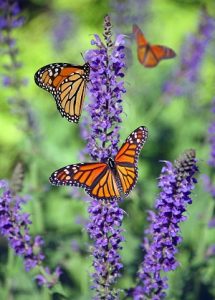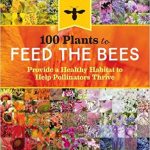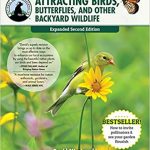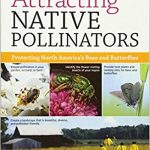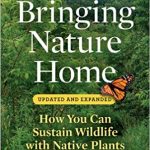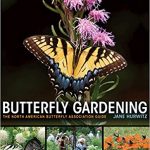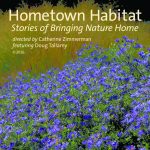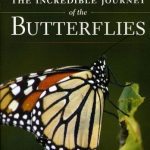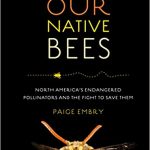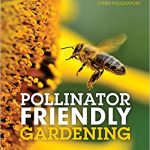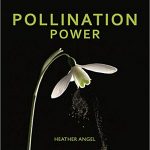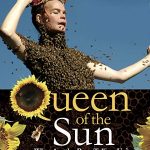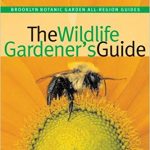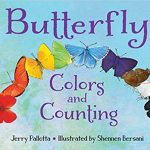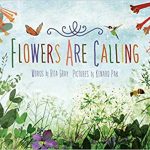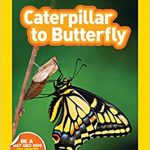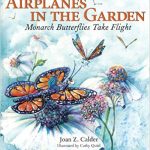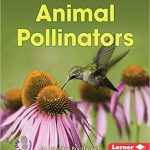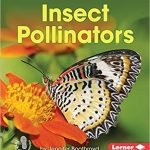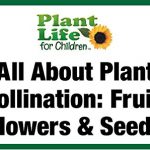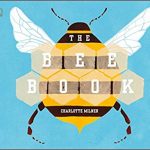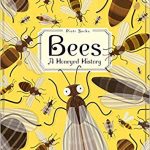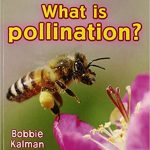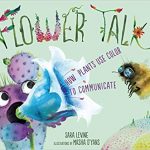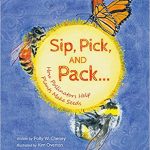Pollinators and Your Garden
Library Guide
This Pollinators Library Guide will introduce you to books, DVDs, and web resources all about pollinators, why they’re important, and how to support them, including: landscaping with native plants, providing nesting places, avoiding pesticides, and more.
The books and DVDs listed in this guide are available at the Lora Robins Library at Lewis Ginter Botanical Garden, and can be borrowed by Garden members.
WHAT ARE POLLINATORS?
Pollination is the transfer of pollen—the dust-like structures that carry male reproductive cells in flowering plants—from the male anther of a flower to the female stigma of the same species. This leads to fertilization, successful seed and fruit production, and a new generation of plants. Pollination can occur via wind, water, or the hard work of pollinators.
Pollinators are animals—such as birds, bees, butterflies, moths, wasps, beetles, and bats—that visit flowers to drink nectar, and transport pollen grains on their bodies as they move within a flower and from bloom to bloom.
WHY SAVE SEEDS?
Animal and insect pollinators play an essential role in flowering plant reproduction and ensure genetic diversity in the plants they pollinate. Not only are they vital to healthy ecosystems, but they are also responsible for the production of most fruits and vegetables; we can thank pollinators for one out of every three bites of food that we eat.
Pollinators are in decline. They are threatened by habitat loss, climate change, disease, parasites, invasive species, and the excessive and inappropriate use of pesticides. Here are some ways you can help:
- Plant a pollinator garden using a variety of flowering plants native to your ecoregion
- Provide nesting places in the form of tree snags, bare patches of soil, or bee houses
- Avoid using pesticides, herbicides, and fungicides
- Spread the word: talk to friends, family, neighbors, and policymakers about the importance of supporting pollinators.
BOOKS FOR ADULTS
100 Plants to Feed the Bees: Provide a Healthy Habitat to Help Pollinators Thrive by the Xerces Society (2016)
This field guide identifies and offers basic planting information about the plants that North America’s pollinators—bees and others—find most nutritious, with emphasis on native species.
Attracting Birds, Butterflies & Other Wildlife to Your Backyard by David Mizejewski (2019)
Mizejewski, a naturalist with the National Wildlife Federation, provides homeowners with step-by-step plans for reintroducing native plants that support birds, butterflies, bees, and other pollinators.
Attracting Native Pollinators by the Xerxes Society (2011)
This book offers ways to create a welcoming habitat for your local pollinators, including bees, butterflies, moths, flies, and more.
Bringing Nature Home by Douglas Tallamy (2009)
This book demonstrates the link between native plant species and native wildlife, emphasizing the essential ecological role of insects. Tallamy argues that home gardeners can ease pressures on wildlife populations simply by incorporating native plants into the landscape.
Butterfly Gardening: The North American Butterfly Association Guide by Jane Hurwitz (2018)
This user-friendly guide explains how to choose and cultivate plants that will attract a range of butterflies, while sustaining them through their life cycles, region by region.
Hometown Habitat: Stories of Bringing Nature Home by Catherine Zimmerman (2016)
This environmental documentary examines why native plants are critical to the survival and vitality of local ecosystems, and celebrates “habitat heroes,” community members working to support wildlife by growing native plants.
The Incredible Journey of the Butterflies by NOVA (2009)
Every year, 100 million monarch butterflies embark on a 2,000-mile journey across North America. Here, NOVA’s filmmakers follow monarchs throughout their extraordinary odyssey.
Our Native Bees: North America’s Endangered Pollinators and the Fight to Save Them by Paige Embry (2018)
Informally written but informative, this book examines the vital role of North America’s native bees, the threats they face, and the initiatives to preserve them.
Pollinator Friendly Gardening: Gardening for Bees, Butterflies, and Other Pollinators by Rhonda Fleming Hayes (2016)
Are you looking for ways to grow a healthy garden that helps bees, butterflies, birds, and other pollinators thrive? This book offers plant lists, growing practices, and more helpful information for the home gardener.
Pollination Power by Heather Angel (2016)
How do flowering plants attract pollinators at precisely the right time? The extraordinary photographs in this book capture the colorful, fragrant, and intimate “conversations” between plant and pollinator.
Queen of the Sun: What are the Bees Telling Us? by Taggart Siegel (2011)
This documentary examines colony collapse disorder, a recent phenomenon that occurs when a colony’s worker bees abandon a hive, along with its queen, food supply, and immature bees.
The Wildlife Gardener’s Guide by Janet Marinelli (2008)
Published by the Brooklyn Botanic Garden, this concise guide suggests 10 different projects for the home gardener seeking to make their backyard a haven for wild creatures, including pollinators.
BOOKS FOR KIDS
Butterfly Colors and Counting by Jerry Pallotta (2013)
This vibrant board book helps young readers learn to count to ten while also learning the colors of the rainbow, using ten illustrations of real butterfly species found around the world. (Newborn to age 3)
Flowers Are Calling by Rita Gray (2015)
Delightful rhyming text shows the beneficial relationships between flowers and their pollinators, as all play their parts in a gorgeously rendered forest ecosystem. (Ages 4-7)
Caterpillar to Butterfly by Laura Marsh (2012)
This easy-reader breaks down the life cycle of a butterfly and offers information on how to create a butterfly garden. (Ages 5-7)
Airplanes in the Garden by Joan Z. Calder (2011)
Kid-friendly language and whimsical illustrations convey complex ideas about the monarch butterfly’s lifecycle. A section in the back includes maps and information about monarch migration, additional monarch facts, and tips for planting a butterfly garden. (Ages 5-8)
Animal Pollinators by Jennifer Boothroyd (2015)
Readers will discover how hummingbirds, bats, lemurs, and other animals play a big role in pollination. Simple text, photographs, and diagrams break down big concepts for young readers. (Ages 5-8)
Insect Pollinators by Jennifer Boothroyd (2015)
With simple text and bright photographs, readers will learn how bees, butterflies, beetles, and other insects pollinate flowers. (Ages 5-8)
All about Plant Pollination: Fruit, Flowers & Seeds by Stone House Productions (2006)
This film follows a young investigative agent for M.A.P.L.E. (the Marvelous Association of Plant Loving Enthusiasts) in his search for information about plants, including anatomy, pollination, seed dispersal, and more. (Ages 5-8)
The Bee Book by Charlotte Milner (2018)
This beautifully designed book offers a crash course in honeybees: what they do, why they’re important, why they’re at risk, and what children and their adults can do to help. (Ages 5-8)
Bees: A Honeyed History by Piotr Socha (2017)
Part science, part cultural history, this book celebrates the vital role that bees have played in our ecosystem throughout the ages. Gorgeous illustrations detail everything from bee anatomy to the basics of honey making. (Ages 6-9)
What is Pollination? by Bobbie Kalman (2011)
This book breaks down the big idea that pollinators are essential to a successful ecosystem—and our food system—and introduces ways for children to protect these important creatures. (Ages 7-10)
Flower Talk by Sara Levine (2019)
Narrated by a prickly cactus, this entertaining book explains how plants attract pollinators using color, form, and smell. (Ages 7-11)
Sip, Pick, and Pack…: How Pollinators Help Plants Make Seeds by Polly W. Cheney (2017)
Playful rhyming text and colorful labeled illustrations introduce readers to basic plant anatomy, fertilization, and some lesser-known pollinators. (Ages 9-11)
WEB RESOURCES
The Best Plants for Attracting Butterflies in Virginia
Lewis Ginter staff created a handy guide for anyone in Virginia looking to support butterflies in their own backyard. Learn about some of our favorite native nectar and host plants.
Beautiful RVA Community Greening Toolkit
Beautiful RVA has developed a set of tools to help you begin creating a healthier, more sustainable environment. Resources include landscape design templates, timelines, budget templates, information about native plants, and more.
Landscape for Life
Landscape For Life™ is a collaboration between the Lady Bird Johnson Wildflower Center and the U.S. Botanic Garden based on the principles of the Sustainable Sites Initiative (SITES®). The Pollinators section offers sustainable landscape techniques that support local pollinators
Lora Robins Library
Discover even more books, DVDs and web resources at the Robins Library at Lewis Ginter Botanical Garden.
Pollinator Partnership
The Pollinator Partnership is a nonprofit that offers information and resources, including ecoregional planting guides, teaching tools, school garden kit, webinars, and a Bee Smart Pollinator Gardener app for help selecting pollinator plants.
U.S. Fish and Wildlife Service — Pollinators
The USFWS shares information about pollination, pollinators, and ways to attract pollinators to your garden, along with educational materials for teachers and caregivers.
U.S. Forest Service — Pollinators
The USFW provides information about pollination, pollinators, and pollinator-friendly practices, as well as a featured Pollinator of the Month.
Virginia Native Plant Society
The VA Native Plant Society is a great launching point for all manner of Virginia native plant information, including selecting and sourcing plants in your region.
The Xerces Society for Invertebrate Conservation
This invertebrate conservation nonprofit offers lots of information about pollinators and ways to protect them, including region-specific resources to aid in the creation, restoration, and maintenance of pollinator habitat.
